Abstract
1. The ventilatory sensitivity to CO2 obtained from a non-steady-state step-ramp CO2 challenge (analogous to the Read rebreathing method) was compared with the one of the steady-state method. 2. Experiments were performed during normoxia on twenty cats anaesthetized with chloralose-urethane. In eight of these cats additional measurements were carried out during metabolic acidosis and alkalosis. 3. The slope of the non-steady-state ventilatory response curve to CO2 was not significantly different from the steady-state one only if the ratio of the step-wise increase in end-tidal PCO2 (PET,CO2) (A) above its resting value and the subsequent rate of rise of the PET,CO2 (R) was equal to the time constant of the central chemoreflex pathway (tau c). This also held true during metabolic acidosis and alkalosis. 4. It is predicted that in human beings during hyperoxia the ventilatory response line obtained with Read's rebreathing method is to a fair approximation shifted to the right by a value of A with respect to the steady-state response line, provided A/R = tau c. 5. We argue that Read's prescription that a PET,CO2 equilibrium should be established between mixed venous blood, arterial blood and end-tidal gas has to be regarded as an experimental condition leading to stable-experiments rather than dictated by physiological mechanisms.
Full text
PDF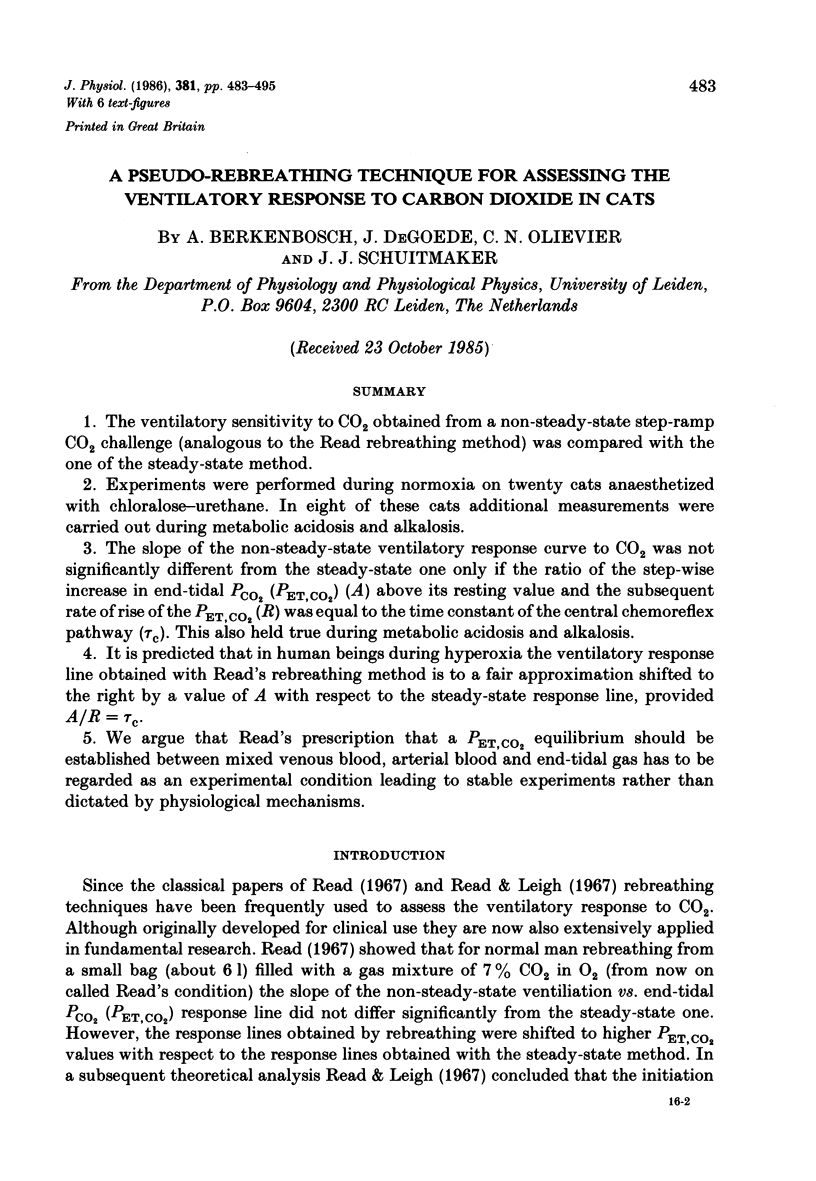
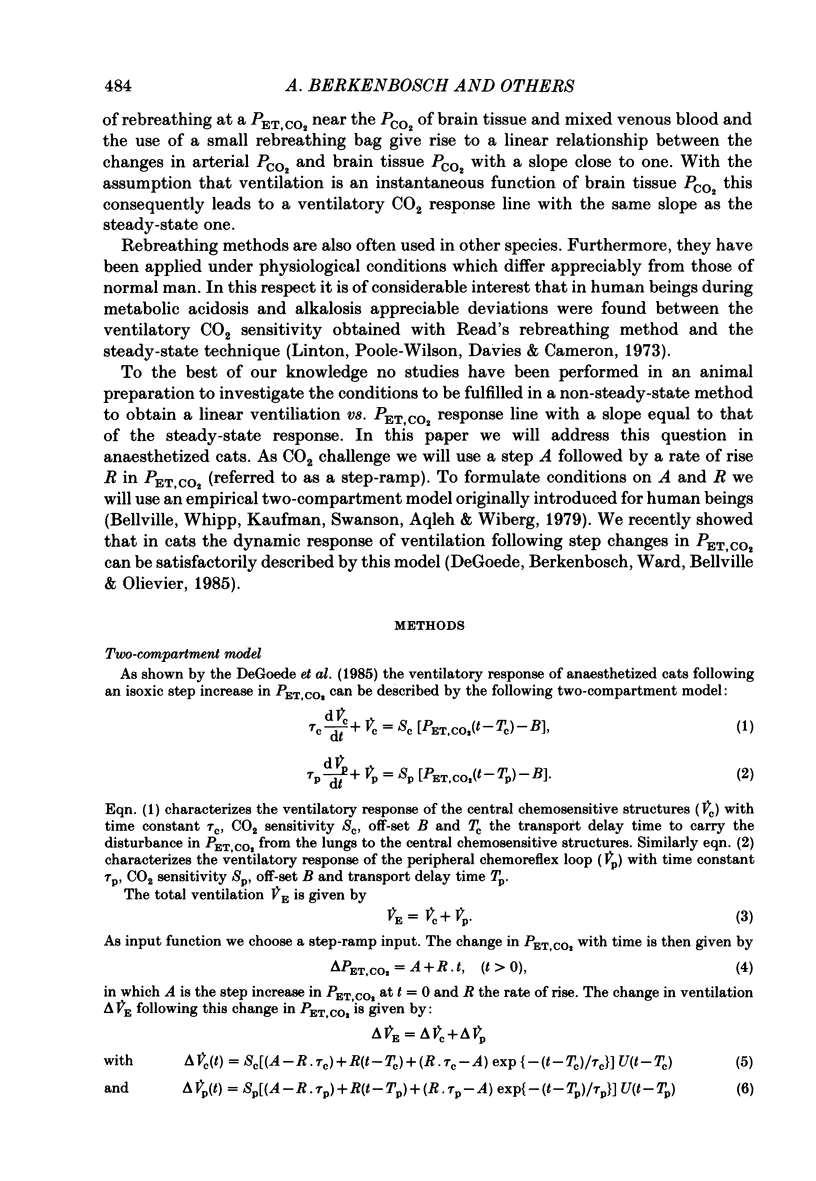
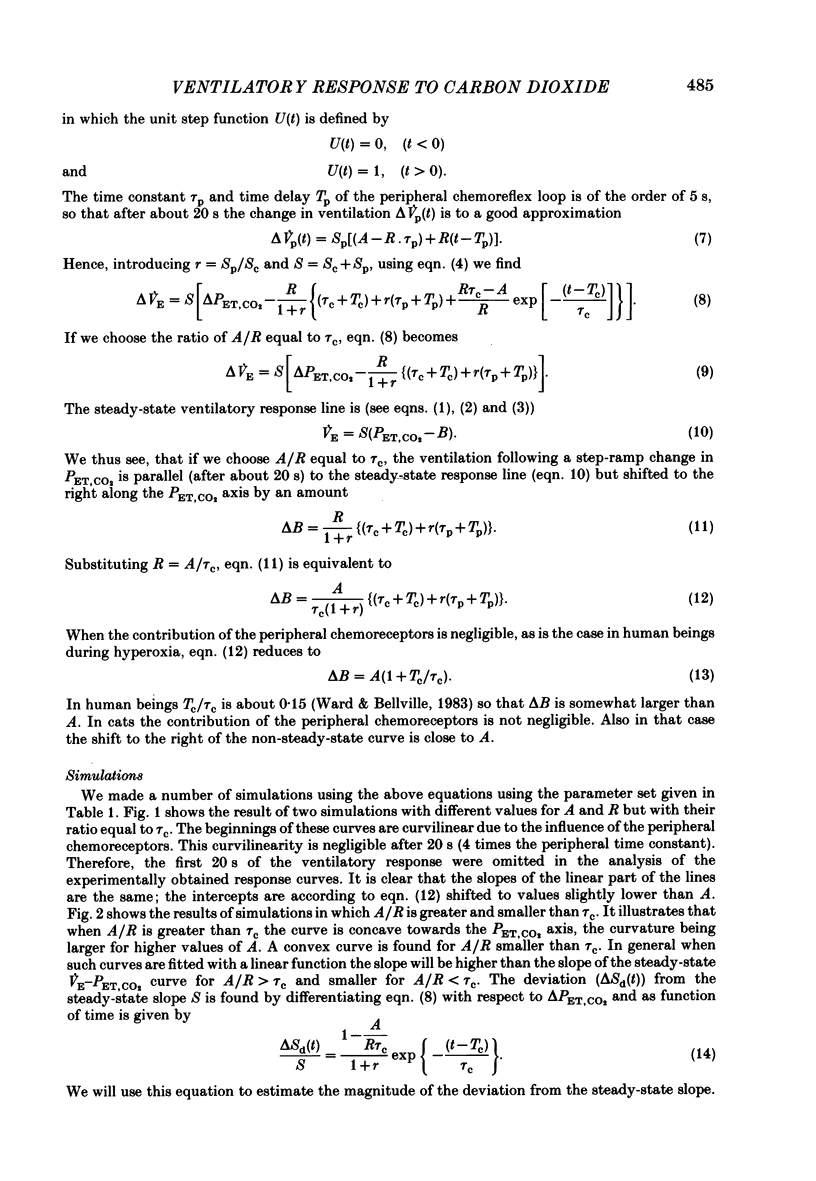

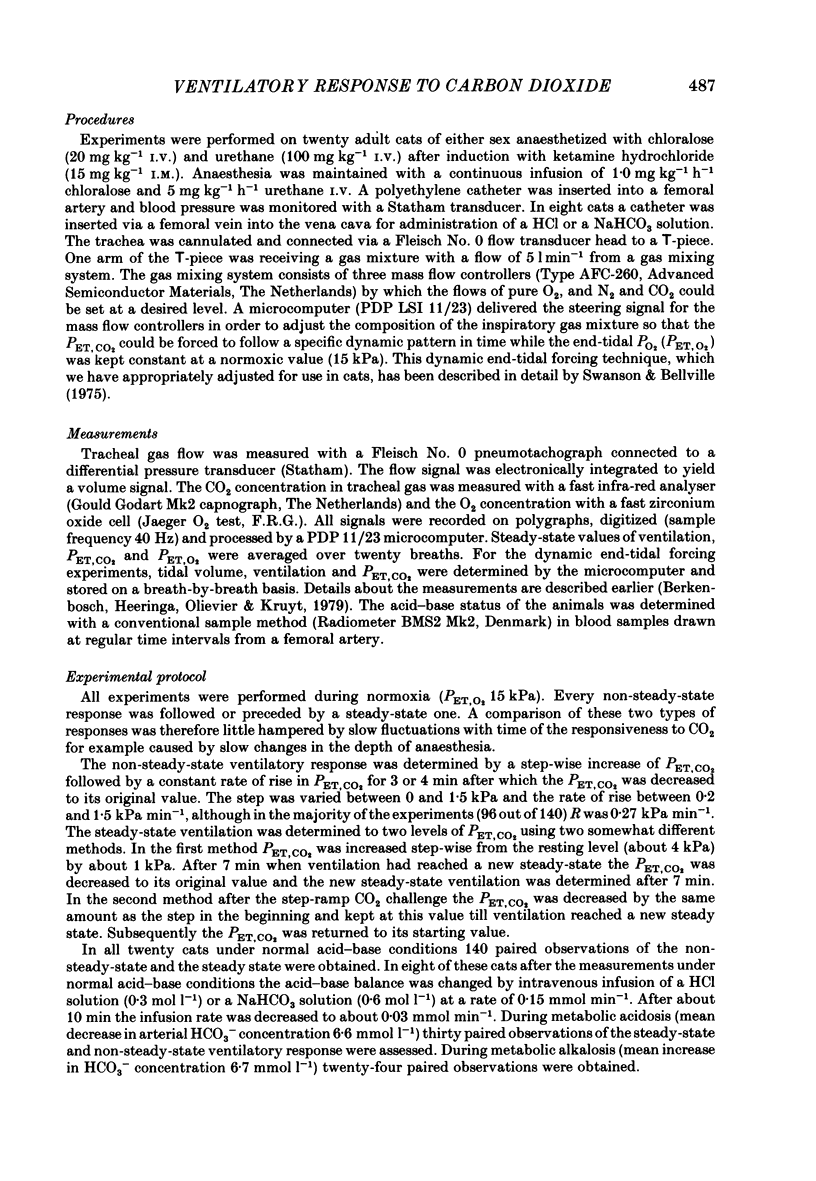
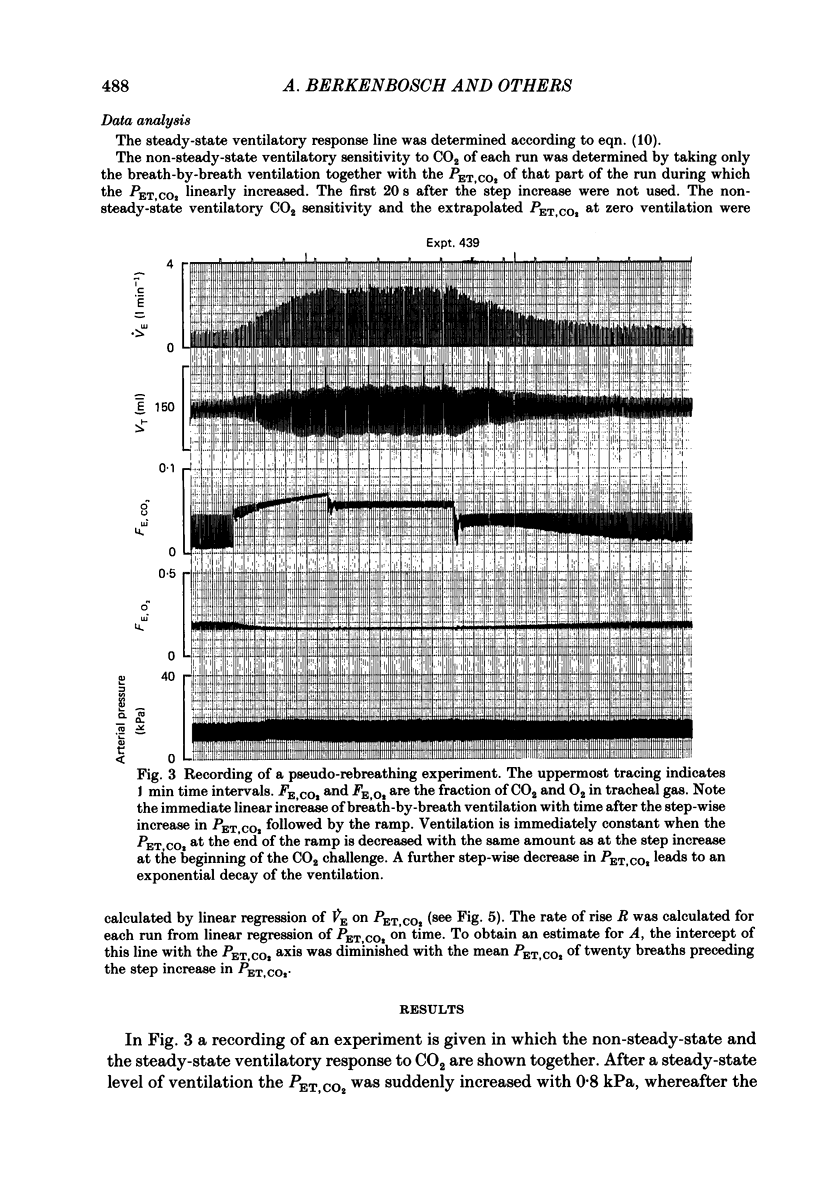
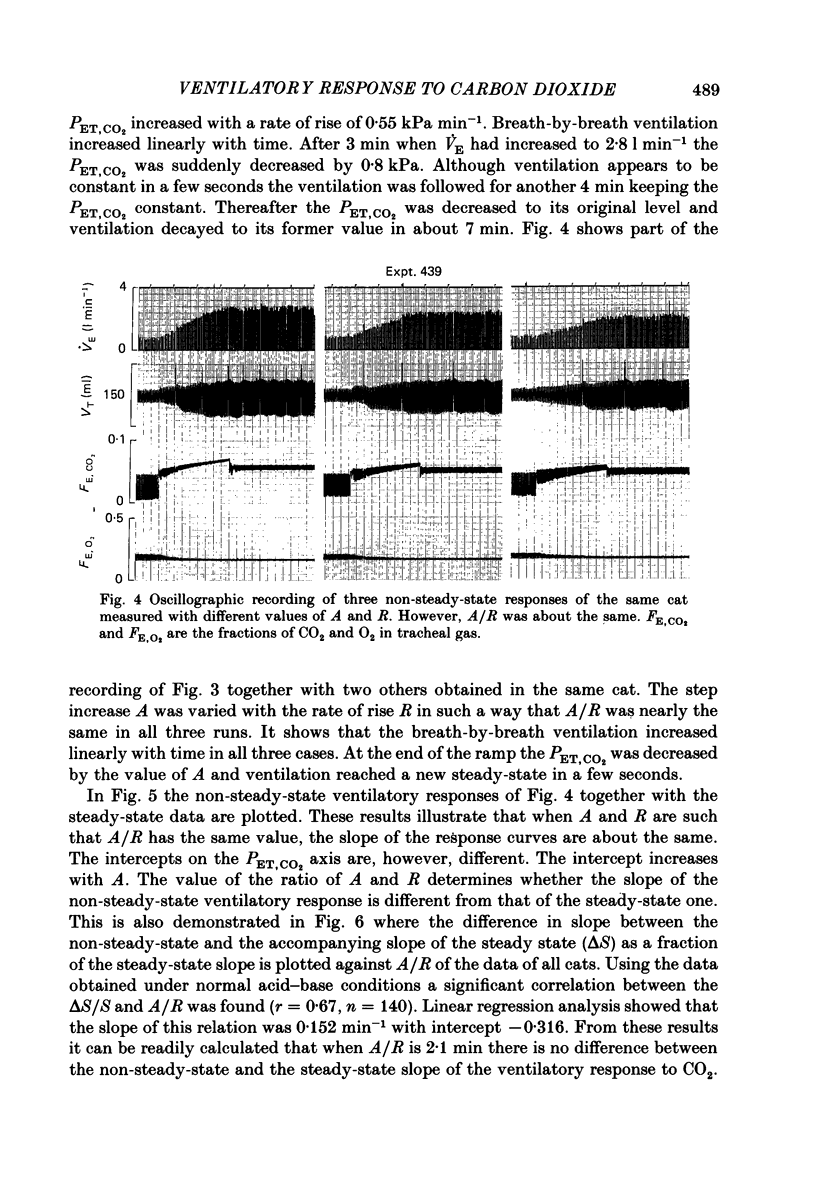

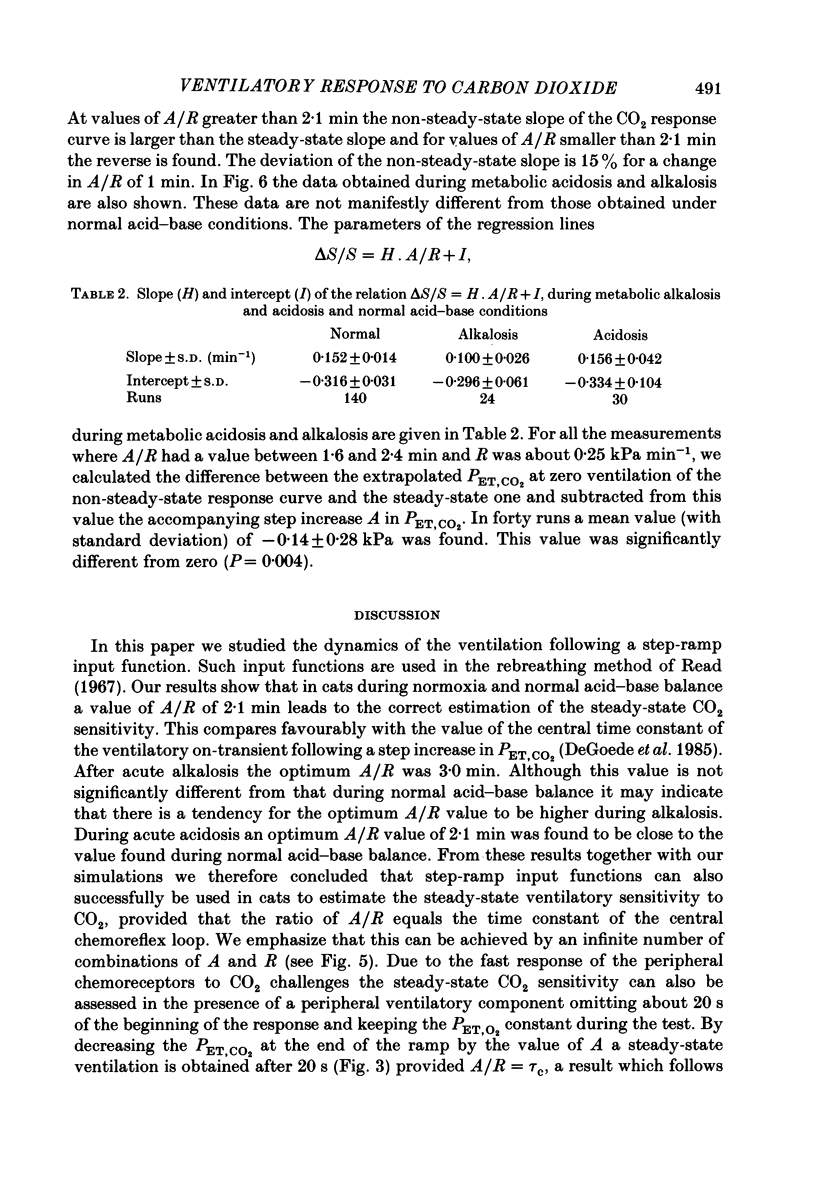
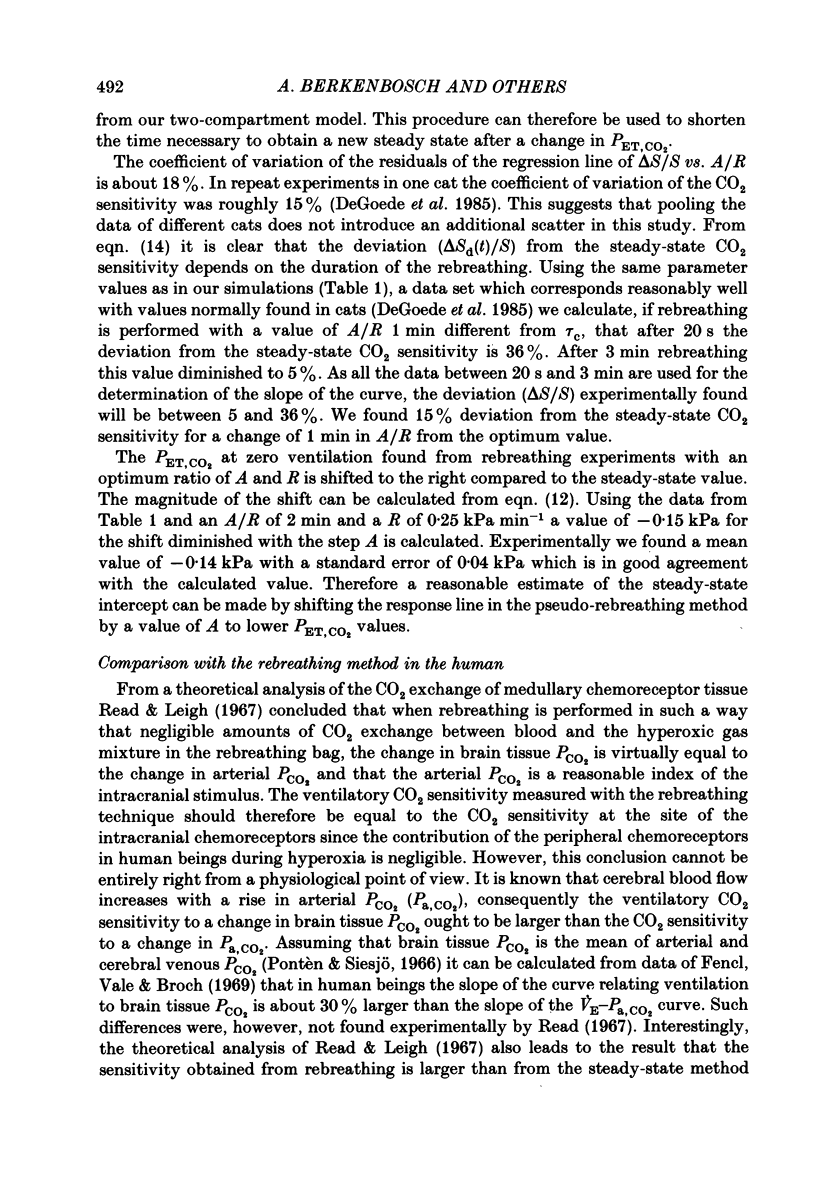
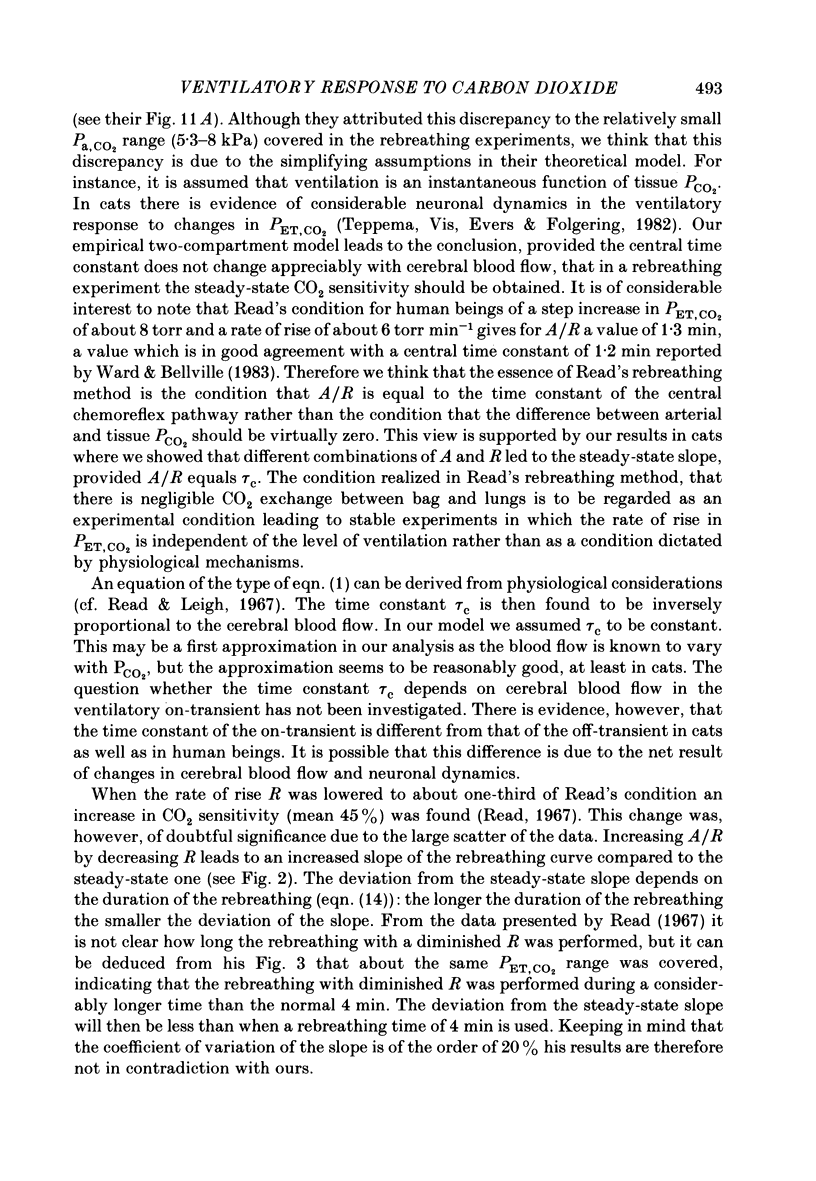
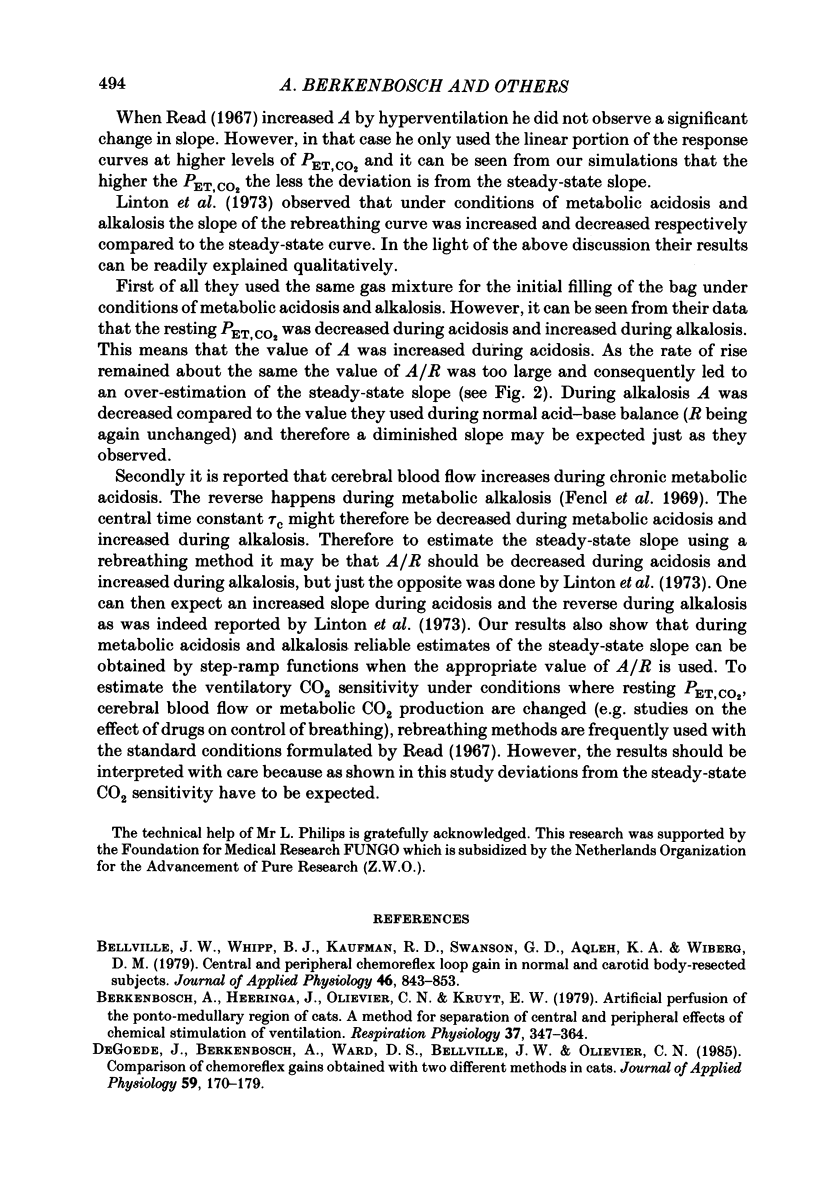

Images in this article
Selected References
These references are in PubMed. This may not be the complete list of references from this article.
- Bellville J. W., Whipp B. J., Kaufman R. D., Swanson G. D., Aqleh K. A., Wiberg D. M. Central and peripheral chemoreflex loop gain in normal and carotid body-resected subjects. J Appl Physiol Respir Environ Exerc Physiol. 1979 Apr;46(4):843–853. doi: 10.1152/jappl.1979.46.4.843. [DOI] [PubMed] [Google Scholar]
- Berkenbosch A., Heeringa J., Olievier C. N., Kruyt E. W. Artificial perfusion of the ponto-medullary region of cats. A method for separation of central and peripheral effects of chemical stimulation of ventilation. Respir Physiol. 1979 Aug;37(3):347–364. doi: 10.1016/0034-5687(79)90081-1. [DOI] [PubMed] [Google Scholar]
- DeGoede J., Berkenbosch A., Ward D. S., Bellville J. W., Olievier C. N. Comparison of chemoreflex gains obtained with two different methods in cats. J Appl Physiol (1985) 1985 Jul;59(1):170–179. doi: 10.1152/jappl.1985.59.1.170. [DOI] [PubMed] [Google Scholar]
- Fencl V., Vale J. R., Broch J. A. Respiration and cerebral blood flow in metabolic acidosis and alkalosis in humans. J Appl Physiol. 1969 Jul;27(1):67–76. doi: 10.1152/jappl.1969.27.1.67. [DOI] [PubMed] [Google Scholar]
- Linton R. A., Poole-Wilson P. A., Davies R. J., Cameron I. R. A comparison of the ventilatory response to carbon dioxide by steady-state and rebreathing methods during metabolic acidosis and alkalosis. Clin Sci Mol Med. 1973 Aug;45(2):239–249. doi: 10.1042/cs0450239. [DOI] [PubMed] [Google Scholar]
- Read D. J. A clinical method for assessing the ventilatory response to carbon dioxide. Australas Ann Med. 1967 Feb;16(1):20–32. doi: 10.1111/imj.1967.16.1.20. [DOI] [PubMed] [Google Scholar]
- Read D. J., Leigh J. Blood-brain tissue Pco2 relationships and ventilation during rebreathing. J Appl Physiol. 1967 Jul;23(1):53–70. doi: 10.1152/jappl.1967.23.1.53. [DOI] [PubMed] [Google Scholar]
- Swanson G. D., Bellville J. W. Step changes in end-tidal CO2: methods and implications. J Appl Physiol. 1975 Sep;39(3):377–385. doi: 10.1152/jappl.1975.39.3.377. [DOI] [PubMed] [Google Scholar]
- Teppema L. J., Vis A., Evers J. A., Folgering H. T. Dynamics of brain extracellular fluid pH and phrenic nerve activity in cats after end-tidal CO2 forcing. Respir Physiol. 1982 Dec;50(3):359–380. doi: 10.1016/0034-5687(82)90029-9. [DOI] [PubMed] [Google Scholar]
- Ward D. S., Bellville J. W. Effect of intravenous dopamine on hypercapnic ventilatory response in humans. J Appl Physiol Respir Environ Exerc Physiol. 1983 Nov;55(5):1418–1425. doi: 10.1152/jappl.1983.55.5.1418. [DOI] [PubMed] [Google Scholar]




